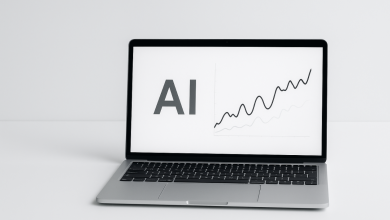
The advent of real-time call captioning, powered by AI, is not just a game-changer for people with hearing impairments but is also transforming communication for everyone. This breakthrough technology, which transcribes spoken words into text during phone conversations, is enabling a new level of accessibility and clarity. But how exactly does AI power this revolutionary tool? Let’s explore the inner workings and real-world applications of AI-driven real-time call captioning.
The Rise of AI in Communication
Artificial intelligence, with its ability to process vast amounts of data quickly and efficiently, has long been a driving force in numerous industries. In the field of communication, AI’s application has led to the development of voice recognition, chatbots, and now, real-time call captioning. These technologies leverage AI’s natural language processing (NLP) capabilities to understand and convert spoken language into written text almost instantaneously.
Real-time call captioning, powered by AI, is a step forward in making voice-based communication more inclusive, especially for individuals with hearing loss. What was once a barrier—hearing loss, language differences, or noisy environments—is now becoming an opportunity for clearer, more inclusive communication.
The Mechanics Behind AI-Powered Captioning
Real-time call captioning works through a combination of AI technologies, including speech recognition, machine learning, and NLP. During a phone call, the application listens to the conversation through the device’s microphone. It then analyzes the audio input, breaking it down into individual words and sentences. AI-powered algorithms map these spoken words into text and display them in real-time on the user’s screen.
AI is trained to handle various accents, dialects, and even background noise, making it highly efficient in diverse environments. The speech-to-text conversion is not perfect, but AI continually improves its accuracy through machine learning. Each interaction helps the system refine its ability to transcribe, adapt to different speakers, and handle more complex linguistic nuances.
For example, live transcription apps use AI to provide real-time captions for phone calls, videos, and conversations. This service is a major leap in inclusivity, enabling those with hearing impairments to understand live conversations with a high level of precision.
AI’s Role in Enhancing Accessibility
The primary beneficiary of AI-powered real-time call captioning is the hearing-impaired community. Traditional communication methods, such as TTY (text telephone) or relay services, were often slow and cumbersome, making communication feel disjointed. With real-time captioning powered by AI, these barriers are being eliminated.
For people with hearing loss, real-time captions during a phone call provide a direct and efficient way to understand spoken conversations. This is particularly crucial in both professional settings and personal interactions, where timely communication is key. The AI-driven captions appear instantly on the screen, making the conversation more fluid and interactive, without requiring the user to rely on other forms of communication like texting or typing.
Breaking Language Barriers
While real-time captioning is essential for those with hearing impairments, it also holds significant potential for breaking down language barriers. In an increasingly globalized world, people are often required to communicate across language divides. AI-powered captioning apps can transcribe conversations in one language and provide real-time translations into another.
For instance, a business call between a Spanish-speaking executive and an English-speaking partner can be transcribed in one language and then translated into the other. The real-time captions provide both clarity and understanding, ensuring that communication flows smoothly despite language differences.
Additionally, captioning apps are beginning to offer multi-language support, enabling real-time transcription and translation in several languages. As AI continues to evolve, the accuracy of these translations will only improve, making cross-cultural communication more seamless than ever before.
Real-World Applications of AI-Powered Call Captioning
The applications of AI-driven real-time call captioning are vast and varied. In business, customer service agents can benefit from this technology, as it ensures that no details are missed during phone calls. Transcription of customer queries, along with AI-generated responses, can help companies improve the efficiency of their services and provide accurate records for future reference.
In healthcare, medical professionals can use AI-powered captioning during phone consultations to transcribe medical discussions in real time. This ensures that important details are captured accurately, minimizing the risk of errors. Similarly, in education, real-time call captioning can be used to transcribe lectures, making them accessible to students with hearing impairments or non-native speakers.
The Road Ahead for AI-Powered Call Captioning
While AI-powered real-time call captioning has already made significant strides, there is still plenty of room for improvement. The technology is evolving rapidly, and advancements in machine learning and NLP will continue to enhance its accuracy, speed, and versatility. For instance, AI will soon be able to better handle jargon, industry-specific terminology, and complex technical language, making it even more effective in professional settings.
Furthermore, as privacy concerns grow, developers are working to ensure that these applications adhere to strict security standards, protecting sensitive information from unauthorized access. With proper safeguards in place, AI-powered call captioning has the potential to become an integral part of everyday communication for people across the world.



